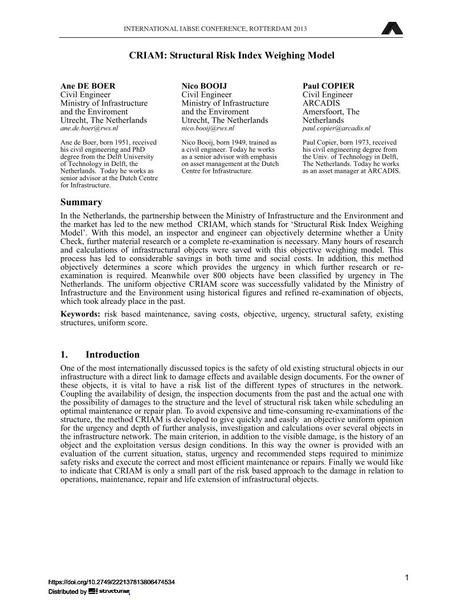CRIAM: Structural Risk Index Weighing Model

|
|
|||||||||||
Détails bibliographiques
| Auteur(s): |
Ane de Boer
Nico Booij Paul Copier |
||||
|---|---|---|---|---|---|
| Médium: | papier de conférence | ||||
| Langue(s): | anglais | ||||
| Conférence: | IABSE Conference: Assessment, Upgrading and Refurbishment of Infrastructures, Rotterdam, The Netherlands, 6-8 May 2013 | ||||
| Publié dans: | IABSE Conference, Rotterdam, May 2013 | ||||
|
|||||
| Page(s): | 128-129 | ||||
| Nombre total de pages (du PDF): | 8 | ||||
| Année: | 2013 | ||||
| DOI: | 10.2749/222137813806474534 | ||||
| Abstrait: |
In the Netherlands, the partnership between the Ministry of Infrastructure and the Environment and the market has led to the new method CRIAM, which stands for ‘Structural Risk Index Weighing Model’. With this model, an inspector and engineer can objectively determine whether a Unity Check, further material research or a complete re-examination is necessary. Many hours of research and calculations of infrastructural objects were saved with this objective weighing model. This process has led to considerable savings in both time and social costs. In addition, this method objectively determines a score which provides the urgency in which further research or re- examination is required. Meanwhile over 800 objects have been classified by urgency in The Netherlands. The uniform objective CRIAM score was successfully validated by the Ministry of Infrastructure and the Environment using historical figures and refined re-examination of objects, which took already place in the past. |
||||
| Mots-clé: |
structures existantes
|
||||
